Unit 2
1/46
There's no tags or description
Looks like no tags are added yet.
Name | Mastery | Learn | Test | Matching | Spaced |
|---|
No study sessions yet.
47 Terms
Arithmetic Density
Population divided by land area
What’s wrong with arithmetic density?
Assumes all land are equally inhabitable
Doesn't differentiate between arable & non arable land
Physiological density
Population divided by amount of arable land (land that can be farmed)
How do you measure physiological density?
The higher the physiological density, the more pressure for farmland to produce more food
The lower the physical density, the more likely the land will feed enough people
Agricultural Density
Total farmers divided by total arable land
What is a benefit of agricultural density?
Helps geographers understand how labor-intensive agriculture is in a given place
How do you measure agricultural density?
Low number = less farmers growing food = more mechanization
dependency ratio
higher the # = higher the pressure for working group to support the dependents

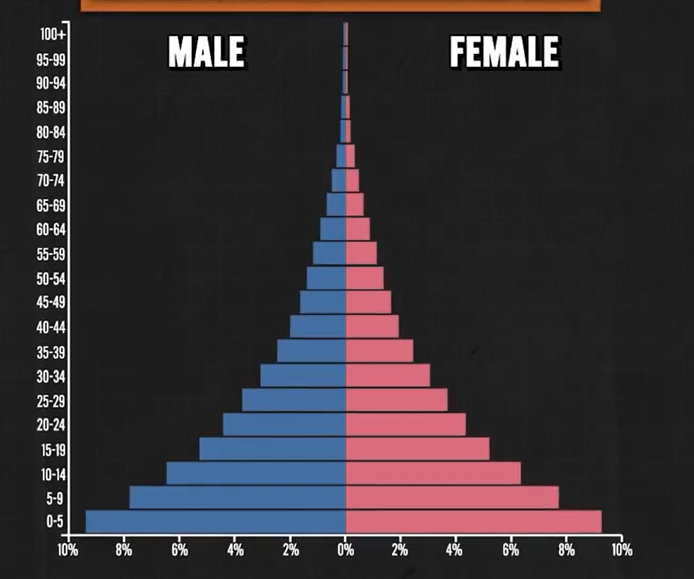
shorter lifespan in top
high birth rate in bottom
rapid growth population pyramid
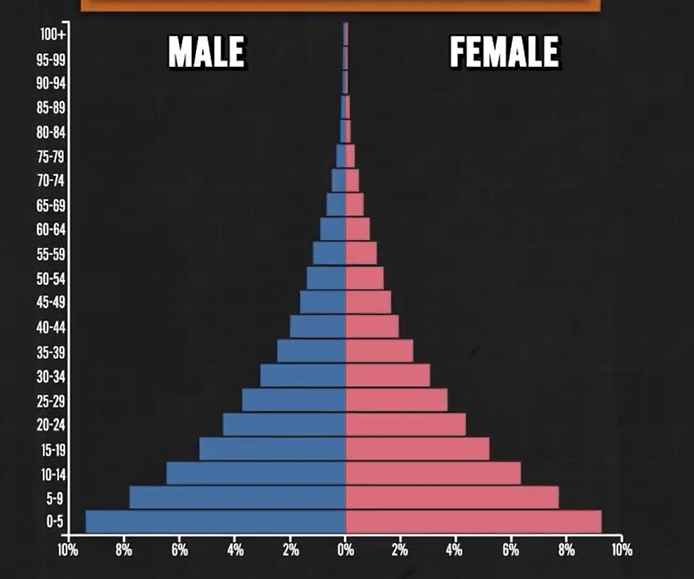
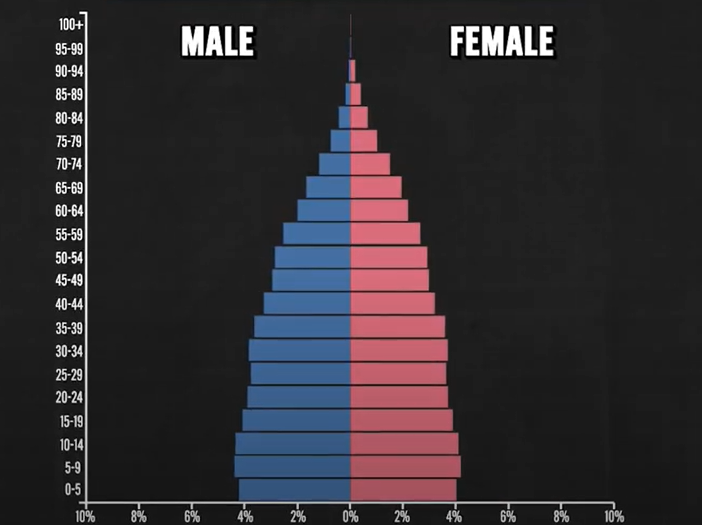
birth rate is SLIGHTLY higher than the death rate
Slow growth population pyramid
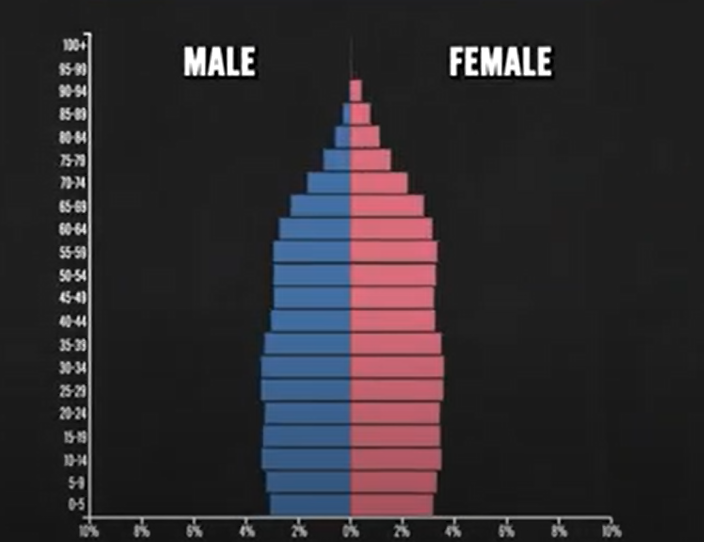
death and birth rates are similar
Stable growth population
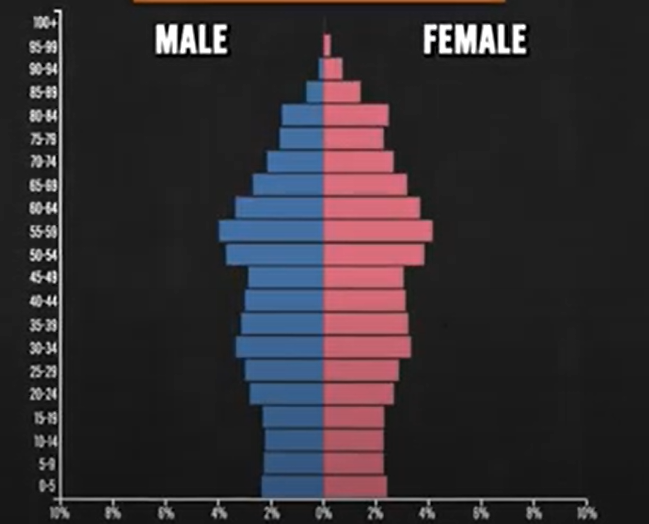
base is more narrow than top
declining growth population
Rate of natural increase
crude birth rate minus crude death rate
measure of how quickly a population is growing or declining
what does a high RNI indicate?
more people born than dying
what does a low RNI indicate?
population stable
negative RNI
population declining
limits of DTM?
only considers birth & death rates
doesnt take migration into consideration
restricted to western countries
stage 1 of ETM
disease & famine
stage 2 of ETM
improved sanitation & medicine
pandemics
industrial revolution
stage 3 of ETM
degenerative diseases
increase diseases for old people (heart attacks, cancer)

stage 4 of ETM
advanced medicine to slow diseases

stage 5 of ETM
emerging infections
new bacterial mutations

pronatalist
promotes birth

antinatalist
restricts birth
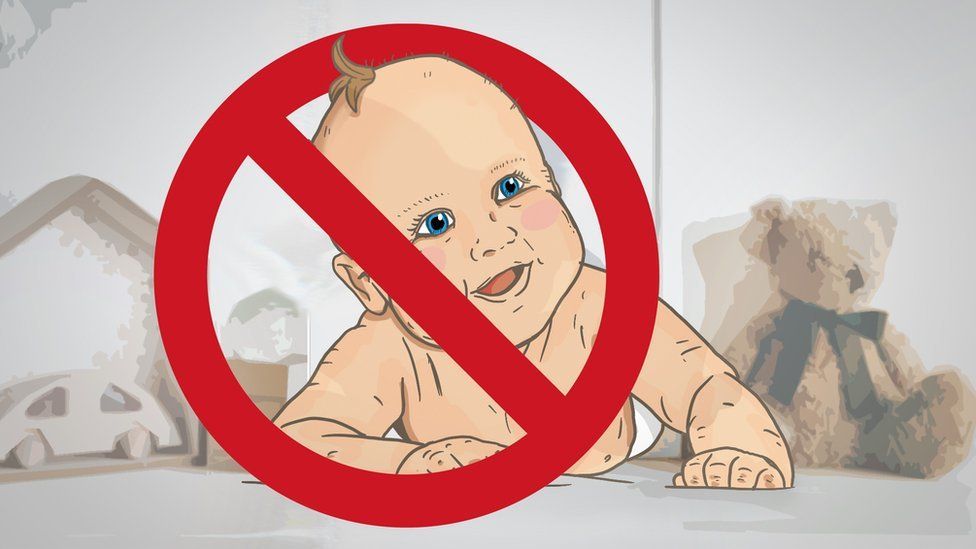
infant mortality rate
measure of how many infants die within the first year of life per thousand births
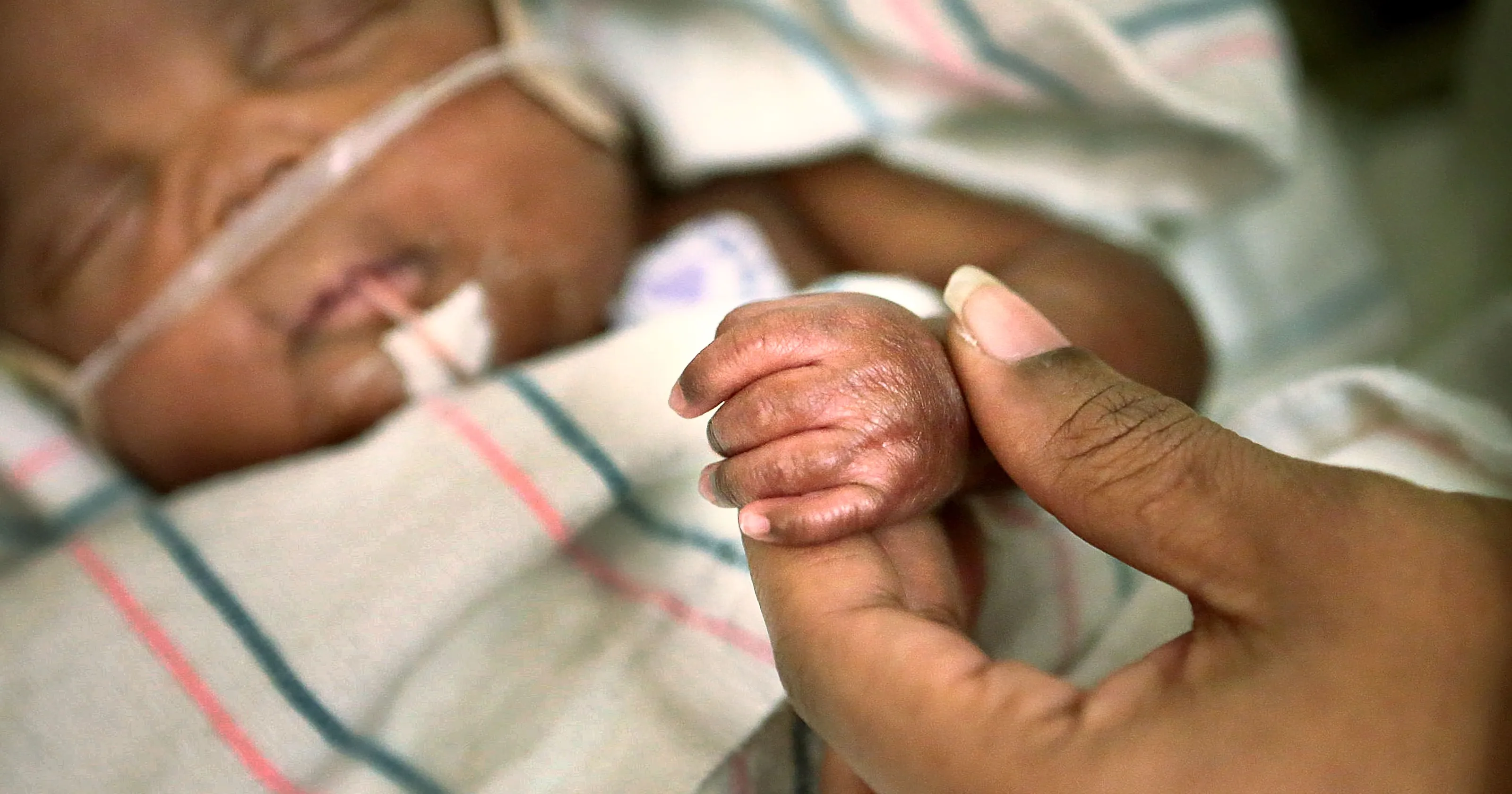
Ravenstein’s Law of Migration
Migrations are mostly cuz of economics
travel short distances (step migration)
long-distance migration are more likely by men
most migrants travel rural to urban
transnational migration
migrants who move but simultaneously retain strong ties to people at home
transhumance migration
seasonal movement of livestock
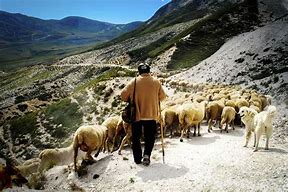
Internal Migration
People who migrate within the borders of a country
Chain Migration
One person’s migration can lead to further migrations among their family
total fertility rate
number of kids a woman will have in fertile years (15-49)
DTM Stage 1 (High Stationary)
pre-industrial
mainly farmers
poor nutrition & disease
HIGH birth & death rate
LOW population
DTM Stage 2 (Early Expanding)
early entry to industrialization
HIGH birth rate
DECREASE death rate
INCREASE population
Countries in DTM Stage 2
Nigeria
Guatemala
Afghanistan
Yemen
DTM Stage 3 (Late Expanding)
medicine getting better
continue industrialization
DECREASE birth rate (gradually)
LOW death rate
SLOW population growth
Countries in DTM Stage 3
Mexico
India
South Africa
DTM Stage 4 (Low Stationary)
completely industrialized
worries abt old ppl diseases
LOW birth & death rate
NEUTRAL population growth
Countries in DTM Stage 4
Canada
South Korea
United States
DTM Stage 5 (Natural Decrease)
LOW birth & death
DECREASE population
Countries in DTM Stage 5
Germany
Japan
Problems with ETM
oversimplifies the causes of population change due to disease
doesn’t account for poverty as a cause of disease spread
remittance
money earned by an emigrant abroad and sent back to his or her home country
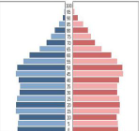
What stage of DTM is this?
Stage 1
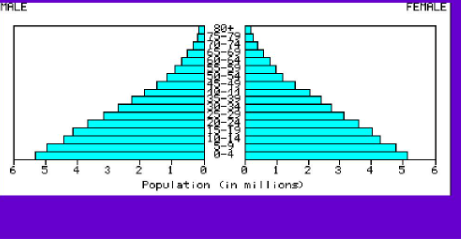
What stage of DTM is this?
Stage 2
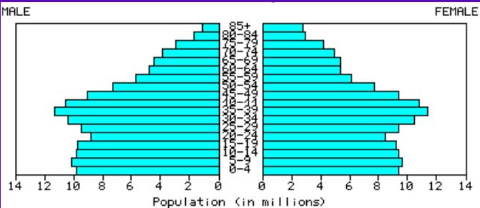
What stage of DTM is this?
Stage 3

What stage of DTM is this?
Stage 4
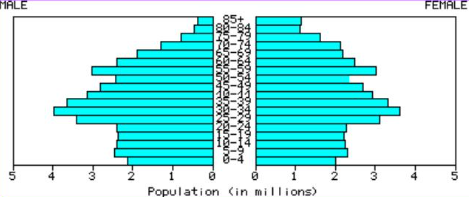
What stage of DTM is this?
Stage 5